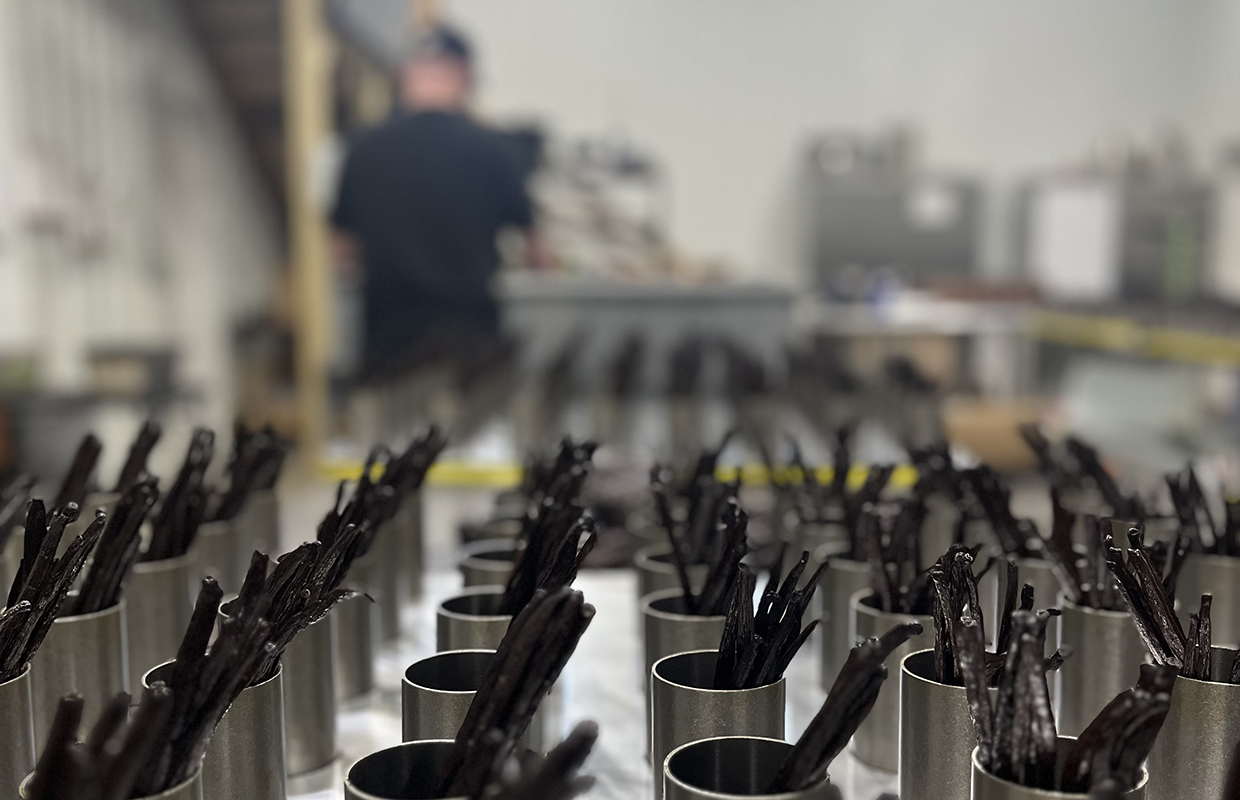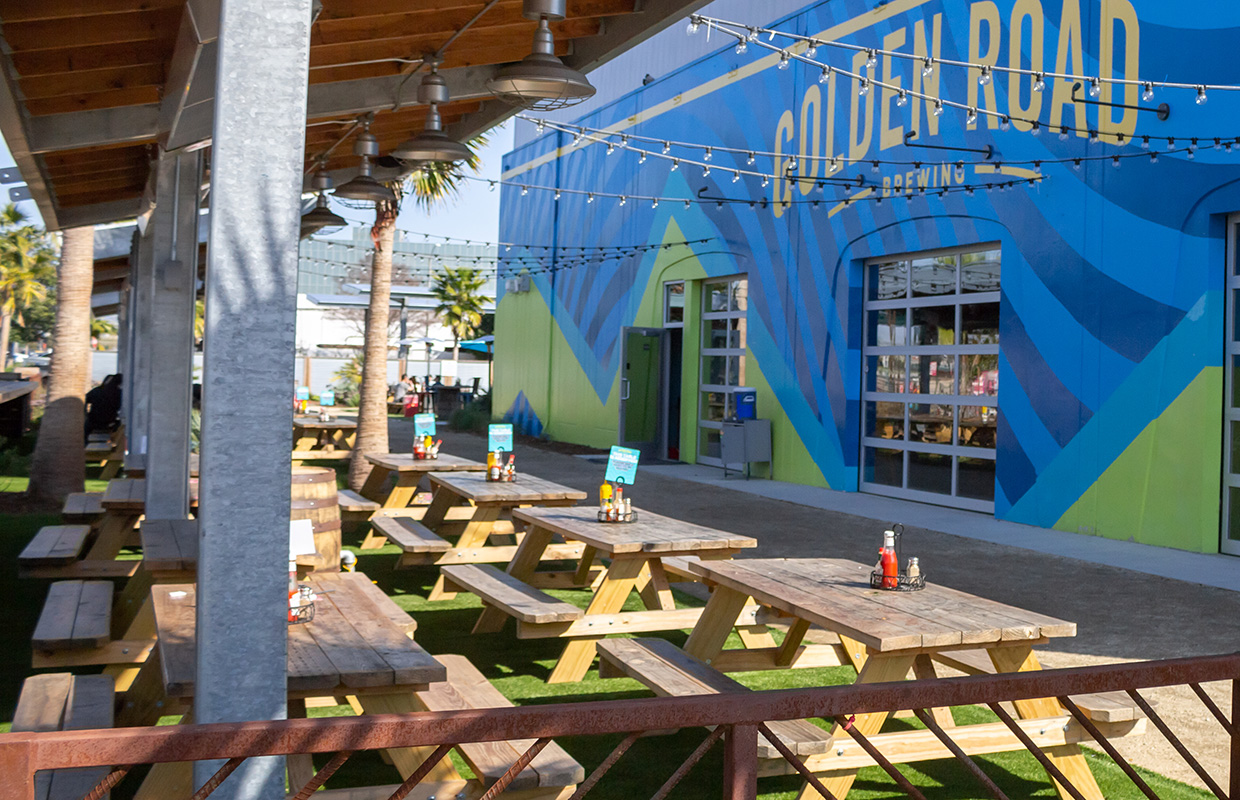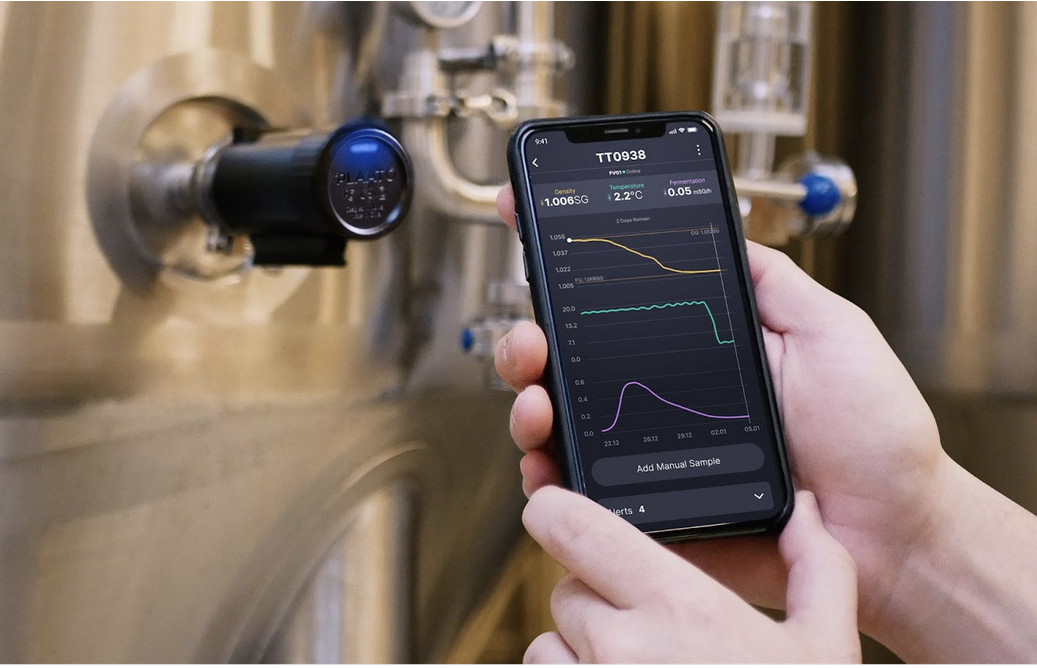
- Why would a brewery owner want to use vanilla beans in their beer?
Vanilla beans can be a really cool addition to beer for a few reasons. First, they can provide a really rich and complex flavor profile, sometimes adding a smooth, sweet, and even floral taste to the beer. This enhances the beer’s overall complexity and really supports the other flavors included in the beer. Vanilla beans can compliment porters, stouts, and brown ales really well. They accentuate the malty and roasty characteristics in the heavier and darker beers, and can also add a layer of sweetness that balances out some bitterness or enhances existing chocolate or coffee flavors. Craft brewers love the creativity, science, and art of perfecting a new flavor combination. A vanilla beer could really stand out on a tap list, hopefully attracting more customers and expanding the brewery’s versatility.
- Is vanilla only a seasonal ingredient, or can it be supplied year round?
Vanilla is not strictly a seasonal ingredient — it is typically available year round, although price and availability of certain beans and countries of origins may fluctuate. Because vanilla beans are an agricultural product, they are at the mercy of weather and other elements, so there will be natural variances in length, weight, moisture content, etc. Each crop, shipment, and even bean will vary from one to the next, depending on many conditions. Vanilla beans are typically harvested at specific times in the year in different regions, and legislation has made adjustments in exportation laws in order to provide only top of the line products.
- What styles of beer pair especially well with vanilla beans?
Stouts & Porters: Vanilla compliments the roasted, chocolatey notes, adding some smooth sweetness. Vanilla is a classic addition to imperials, milk, or oatmeal stouts. It can really compliment the caramel and coffee flavors in porters also.
Brown Ales: Vanilla adds depth and sweetness to brown ales and balances the maltiness and nutty flavors.
Wheat Beers: Less common = more intriguing! Change up the classic wheat beer by adding some vanilla beans to add sweetness.
It’s all about balance! Perfecting the amount and timing in the brewing process will make sure to provide a nice subtle bump of sweetness without overpowering the other elements.
- What’s a typical ratio of vanilla bean to beer?
A common starting point is about 25-30 vanilla beans per barrel of beer. The ratio changes based on bean freshness and quality, the beer style you started working with, as well as how much vanilla flavor you’re looking for! Most brewers slice the vanilla beans lengthwise and scrape the seeds out then soak the beans in (typically) vodka for a few days, then add both the beans and the liquor to the beer. The seeds themselves don’t contribute a ton of flavor, but they are a beautiful visual if you’re working with a lighter beer. Start conservatively and work your way up as the beer ages.
- What should a brewer do once they receive their vanilla beans?
Start with checking the packaging for any damage or signs of mold. Keep them in their vacuum-sealed bag until you’re ready to use them, preferably in a cool, dark place (think “spice cabinet” environment). Before adding them to any beer, split the vanilla bean lengthwise. You can scrape the seeds out if you’d like, or remove them during any of the other brewery steps. If you want to create a bit of a vanilla extract to add to your brew, soak the beans in vodka for a few days, then that can all be added to the beer. Determine the amount of vanilla beans you want to add, and adjust that based on taste tests and other details of the individual batch. Most brewers will add the split beans and any accompanying liquid into the beer during secondary fermentation and aging. The beans can be left in the beer for as short or long as you prefer, depending on the desired strength of the vanilla flavor. Once you’ve reached the ideal flavors, remove the beans to prevent over-extraction.
- What is a common misconception about vanilla beans?
Most people aren’t completely informed about vanilla beans’ flavor, quality, and pricing. Vanilla beans grown in Mexico do not have all of the same flavor profiles and characteristics of vanilla beans grown in Uganda. These aroma and flavor differences exist because of changes in soil chemistry, amount of precipitation, and curing methods. The price of vanilla beans can vary greatly, depending on weather, crop yield, market demand, and political factors. A poor crop may lead to inflated prices, and purchasing vanilla beans with certain certifications like organic and Kosher may nudge the prices up even a bit further. Being aware of social and economic issues is also a priority in vanilla production. Many steps have been taken worldwide to encourage fair wages for farmers, practicing sustainable farming, and being conscientious of the impact of the market demand on local economies. Businesses are becoming increasingly concerned about the ethical sourcing of vanilla beans, to ensure that everyone, and everything, is being treated fairly.
- What are some signs of high-quality vanilla beans?
Appearance: Quality vanilla beans often look plump and moist, and are glossy and a bit oily to the touch.
Aroma: Beans should emit a rich, sweet scent with floral and fruity undertones, possessing a strong vanilla fragrance.
Flexibility and Moisture Content: Quality vanilla beans should have a moderate amount of moisture-enough to feel slightly oily and fairly flexible. Excessively dry or wet vanilla beans can indicate a lower quality product.
Vanillin Crystals: These rare frost-like crystals on the outside of the vanilla bean indicate a high vanillin content. They look like tiny shards of glass but are actually very concentrated chemicals that contribute to the bean’s aroma and flavor.
- How should a brewery owner test vanilla products?
Select a variety of vanilla products such as vanilla beans from different origins, vanilla extracts, pastes, or even powders. Plan small test batches and keep the recipe consistent, only changing the type of vanilla used, including a control batch that will not have any vanilla added. Develop a test tasting panel of brewery staff, regular customers, or otherwise experienced people. Blind taste testing will be beneficial when reviewing each batch’s aroma, taste, and overall impression. Gather feedback and analyze your results. Based on those aspects, choose the product that most aligns with your desired flavor profile. Refine any quantity or flavor combination issues, and scale the recipe up for larger brewing batches.
If you’re a brewer or distiller interested in trying out some vanilla products for an upcoming brew, reach out to us at [email protected] and we can get you connected to some samples and some extra-friendly staff, ready to exchange knowledge! We’re also happy to provide bulk prices and discuss purchasing details. We’re active on Facebook, Instagram, TikTok, Etsy, WalMart, eBay, Amazon, and more!





Be the first to comment